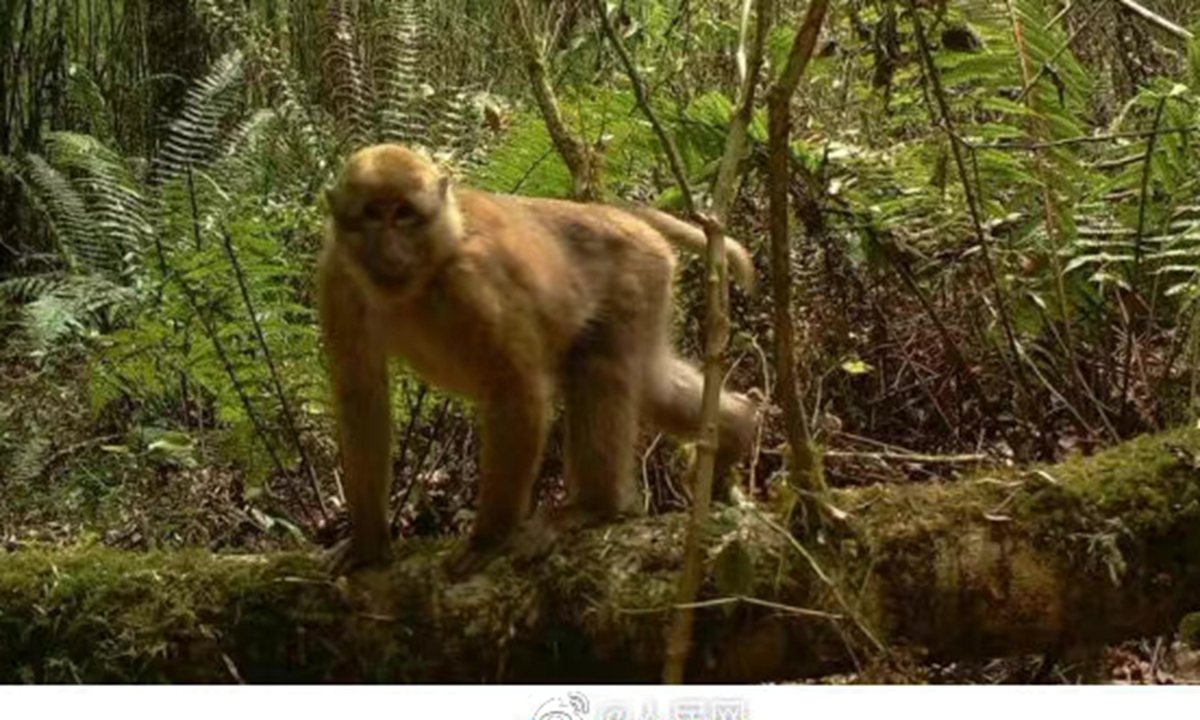ARTS / ART
Five new species of wild animals discovered in SW China’s Tibet Autonomous Region

White-cheek macaque Photo: screenshot of video posted on Sina Weibo
Five new animal species of wild animals have been discovered in Southwest China's Tibet Autonomous Region, sparking the excitement of Chinese netizens about the ecology of the region.The discovery of the five new species was the result of an eight-year investigation of the terrestrial wildlife in the autonomous region carried out by Tibet's Regional Forestry and Grassland Bureau. Covering an area of 6,346 square kilometers, this is the second investigation of such kind carried out by the bureau, the Tibet Business Daily reported on Sunday.
According to the report, these five species include three kinds of frogs, and a type of macaque and bushmaster snake. The investigation also discovered 20 species that were not previously known to live in Tibet.
Living in Medog county in South Tibet, the white-cheeked macaque is the only mammal of all the five new species. The species was first described by its discoverers, Chinese primatologists Li Cheng, Zhao Chao and Fan Pengfei in 2015. It is the first primate species in recent decades to be named by Chinese scholars, and is also the most recent new macaque species to be described in an academic paper.
White-cheeked macaques are stout with the males significantly larger than the females. These animals' backs range from yellowish-brown to chocolate-brown colors, while their cheeks sport the distinct grayish-white hairs that gave them their name.
Protobothrops himalayanus, a type of bushmaster snake, was discovered on the Himalaya Mountains in 2012. Its most distinctive features are its red head and red eyes. It can grow up to 1.5 meters in length.
The discovery of the snake is seen as a big challenge to the notion that the Himalaya Mountains are a desolate and lifeless region.
Liu Wulin, a researcher with Tibet's Forestry Planning and Research Institute, told the Guangming Daily that the discovery of such a large venomous snake is an indication of local species diversity and that the local ecological environment is highly native and not damaged as predators need a complete food chain to survive.
The discovery of the new species was applauded by Chinese netizens.
"Their existence demonstrates that the environment in Tibet has been well protected. Tibet is a treasure house of plants and animals, and there must be many other species waiting to be found," one netizen commented on Sina Weibo.
More than 900 researchers were involved in the investigation, which examined the distribution of wild animals in Tibet, their habitats, population size and changing trends. Identifying threats to the habitats of wild animals, an examination of their domestication and breeding as well as trade were also focuses of the investigation.
Researchers took many photos of the rare species of wild animals such as snow leopards and takins. The various wild animal species in Tibet makes it a heaven for photographers who are obsessed with nature photography.
Some local herders have also taken their cameras and climbed high mountains to discover wild animals. One Tibetan photographer, Qupeng, told the Global Times that he and some other photographers once spent 35 days shooting a snow leopard mother nursing her cubs outside a cave.
He expressed his deep love for the Qinghai-Tibet Plateau and its wildlife, and said he hopes his photos can raise environmental protection awareness.




